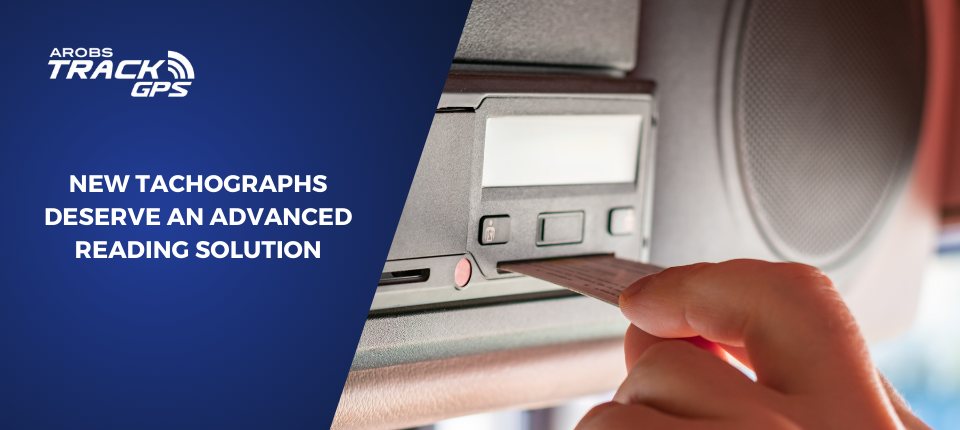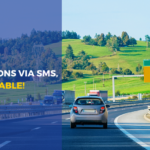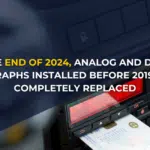The end of this year is expected to be quite busy and tumultuous for the transportation industry. With the introduction of the second generation of smart tachographs, a massive replacement of tachographs is planned by 2025. The reason is to ensure stable communication with control systems. All newly registered heavy commercial vehicles are required to use Smart Tacho 2 (SMT2). Additionally, existing vehicles in operation must install retrofitted devices. The deadline for vehicles with analog and digital tachographs is December 31, 2024, while those equipped with the first generation of smart tachographs have until August 21, 2025. Moreover, starting from July 2026, even commercial vehicles with a total weight between 2.5 and 3.5 tons must be equipped with tachographs.
What are the improvements brought by Smart Tacho 2?
The second generation of smart tachographs differs with its ability to record the vehicle’s position using a GNSS (Global Navigation Satellite System) signal authenticated by the OSNMA service. This authentication protects the location signal, reducing interference and ultimately fraud. Additionally, the Bluetooth interface allows communication with transport systems, as well as data reading and control through external devices. Furthermore, it allows specifying the type of transport (passengers or goods) and records activity for a longer period: the last 56 days compared to 28 days.
In addition, it includes a function where border crossings are automatically recorded. From the drivers’ perspective, they will be required to record loading and unloading activities in the tachograph memory and on driver cards. This will allow cross-verification of records with transport documents. With these functionalities, SMT2 becomes an essential tool not only for maintaining legal compliance but also for monitoring cabotage regulations and driver detachment.
From a legislative point of view, the EC published Regulation (EU) 2023/980. This introduces the necessary amendments to EU Regulation 2016/799, specifically addressing the requirements and functionality of tachographs. Thus, tachograph manufacturers are authorized to use the new equipment.
More and more countries are introducing remote tachograph control
Through the DSRC (Dedicated Short Range Communication) RTM VISUAL system, authorities can remotely verify driving and rest times, as well as tachograph manipulation. Only vehicles showing irregularities will be stopped for checks. Additionally, certain parameters established by legislation are recorded, such as speed, driver activity, countries transited, and the position recorded every three hours of driving. Among the EU countries that have already adopted this technology are Denmark, the Netherlands, Belgium, Poland, Germany, the UK, France, and most recently, Italy. This system significantly reduces inspection and intervention time, thus maintaining traffic flow. Authorities are required to implement remote tachograph control by 2025.
The first step to optimal tachograph use: understanding responsibilities
The legislation regarding tachographs (digital tachographs) in the European Union is governed by Regulation (EC) No. 561/2006 and Regulation (EU) No. 165/2014. Compliance with legislative norms and understanding responsibilities is a constant concern for any fleet manager. These responsibilities can be divided into two categories: those of the transport operator and those of the drivers.
As a transport operator or fleet manager, you must ensure the proper installation, calibration, and verification of tachographs. It is also important to communicate to drivers the rules and expectations regarding their activity and the vehicles they operate.
Responsibilities of the transport operator:
- Scheduling routes in accordance with EU rules on driver working hours and rest periods;
- Downloading driver card data at least every 28 days;
- Downloading vehicle data at least every 56 days;
- Taking reasonable measures to prevent tampering or loss of records.
Responsibilities of drivers:
- Ensuring the tachograph is correctly set to record all activity (break/rest and working periods);
- Properly inserting the driver card at the start of each shift;
- Organizing activities to ensure working and rest hours comply with EU regulations.
With a new tachograph, advanced reading solutions
It is true that implementing the second generation of smart tachographs and the surrounding legislation can be challenging even for the most experienced road transport operators. However, the right solutions for reading, including the second-generation smart tachograph, are designed to simplify things. With the right tools and processes, compliance with tachograph legislation becomes easier!
Tacho Analytics, developed by TrackGPS, offers three main benefits: remote downloading of .ddd files, tachograph data interpretation, and driver identification using tachograph cards.
Save resources with remote .ddd file downloads
The frequency of downloading .ddd files, as required by law, is once every 28 days for drivers and once every three months for vehicles. This process can become time- and cost-intensive, especially for fleets with a large number of vehicles operating across multiple countries. Specifically, costs involve either assigning a person to visit vehicle locations or using specialized tachograph download stations. In these cases, in addition to costs, route deviations and lost time are also added.
The solution becomes straightforward with specialized software like Tacho Analytics. Through this, .ddd files can be downloaded remotely without additional costs. This not only saves money but also time, by avoiding route deviations and meeting delivery deadlines. Moreover, recurring file downloads can be set, enabling better organization of key information and greater flexibility in truck management.
Easily interpret tachograph data
Although fines cannot be eliminated entirely, they can be reduced through data analysis and better fleet management. Tacho Analytics records and interprets tachograph data in real time through the TrackGPS platform. This keeps you constantly informed about each driver’s driving, break, or rest times, and their compliance with legal limits. Data analyzed by our platform is directly sourced from the tachograph and organized by periods, allowing for quick and easy interpretation. It becomes much easier to plan routes based on available resources and to alert employees when necessary.
Driver identification solution
Using the driver card, the TrackGPS platform accurately identifies drivers and provides information on their current activities. This includes details about the vehicle driven, driving/rest status, route followed, real-time position, and the ability to download .ddd files for that driver.
Using the Tacho Analytics solution developed by TrackGPS ensures improved fleet management performance and cost control. This solution can be accessed both via the web platform and mobile devices. It provides real-time access to essential information, which can be easily checked on a mobile phone, including the number of driving, break, and rest hours. Additionally, you can generate daily, weekly, and bi-weekly reports to make informed decisions. This way, maintaining a high standard of compliance becomes easier than ever!




